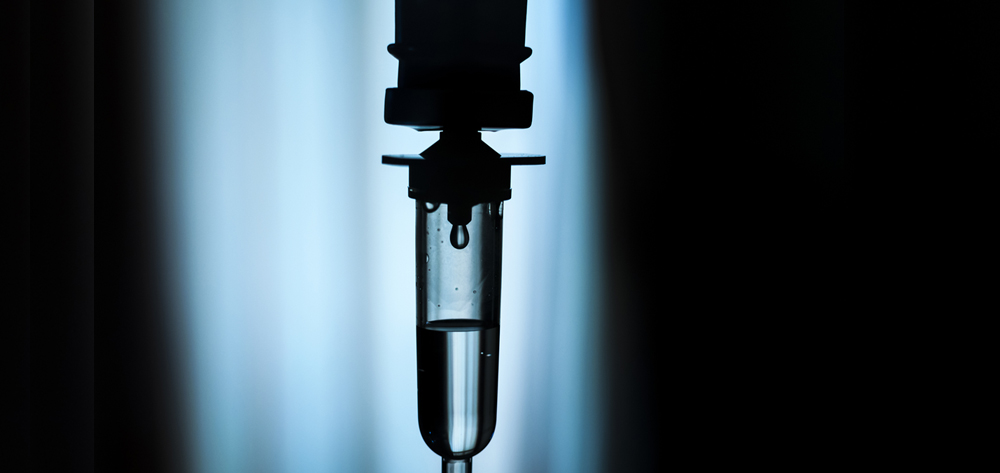Tim Waters, age 28, is admitted to a burn intensive care unit for treatment after a natural gas explosion in his home causes deep partial- and full-thickness burns to 20% of his body surface area. His treatment requires daily wound debridement using minimal to moderate sedation.
History and assessment hints
Before Tim’s scheduled debridement, Valerie Boyer, RN, premedicates him with 1 mg lorazepam P.O. and 10 mg oxycodone P.O. to help reduce anticipated pain. After 45 minutes, he responds to verbal stimuli. Before the debridement begins, she attaches him to a cardiac monitor, pulse oximetry monitor, end-tidal carbon dioxide (ETco2) monitor, and blood pressure cuff. She also initiates 2 L oxygen via nasal cannula, as ordered.
When Valerie asks Tim about his pain level, he states he’s in severe pain. Per standing order, she administers fentanyl 100 mcg I.V. and midazolam 1 mg I.V. Tim is breathing without support and has a purposeful response to light tactile stimuli. His vital signs are: blood pressure 120/68 mm Hg, heart rate 90 beats/minute (bpm), and respiratory rate 14 breaths/minute. His ETco2 is 35 mm Hg; oxygen saturation (Spo2), 100% on 2 L oxygen.
As Valerie proceeds to clean his wounds, he shouts, “You’re hurting me!” Based on standing orders, she administers a second dose of fentanyl 100 mcg I.V. and midazolam 1 mg I.V. Shortly afterward, several monitor alarms sound as Tim’s Spo2 drops below 88% and ETco2 rises to 48 mm Hg.
Call for help
Realizing Tim is oversedated, Valerie shakes him gently and calls out his name loudly to try to arouse him. His Spo2 continues to drop to 80% and his ETco2 climbs to 54 mm Hg. She pages the physician, then performs a jaw thrust–airway maneuver to open his airway.
On the scene
Valerie attaches the bag-valve mask to 15 L oxygen and places the mask on Tim, giving six to eight breaths/minute. The physician orders naloxone 0.4 mg I.V. After Valerie administers it, Tim begins to breathe spontaneously.
Valerie continues to monitor Tim closely. His vital signs improve, with his heart rate rising to 90 bpm (up from 60 bpm), respiratory rate to 12 breaths/minute (compared to 8 breaths/minute), and blood pressure to 118/70 mm Hg (from 80/50 mm Hg). His Spo2 returns to 100% on supplemental oxygen and his ETco2 falls to 35 mm Hg. Valerie monitors his vital signs every 15 minutes to ensure he doesn’t need another naloxone dose.
Outcome
To prevent future oversedation episodes, Valerie asks the physician to decrease the amount of I.V. fentanyl to be given at one time from 100 mcg to 50 mcg. Tim tolerates subsequent debridements without oversedation.
Education and follow-up
Certain risk factors predispose patients to oversedation, including obesity, smoking, sleep apnea, and, as in Tim’s case, opioid naivety. Valerie was able to detect oversedation right away thanks to concurrent ETco2 and pulse oximetry monitoring. Unlike pulse oximetry or clinical assessment alone, ETco2 monitoring alerts the nurse to oversedation immediately.
Selected references
Lü F, Lin J, Benditt DG. Conscious sedation and anesthesia in the cardiac electrophysiology laboratory. J Cardiovasc Electrophysiol. 2013;24(2):237-45.
Pawasauskas J, Stevens B, Youssef R, Kelley M. Predictors of naloxone use for respiratory depression and oversedation in hospitalized adults. Am J Health Syst Pharm. 2014;71(9):746-50.
Waugh JB, Epps CA, Khodneva YA. Capnography enhances surveillance of respiratory events during procedural sedation: a meta-analysis. J Clin Anesth. 2011;23(3):189-96.
Samantha Weimer is a charge nurse in the burn trauma ICU at the University of Colorado Hospital in Aurora. (All names in this scenario are fictitious.)


















